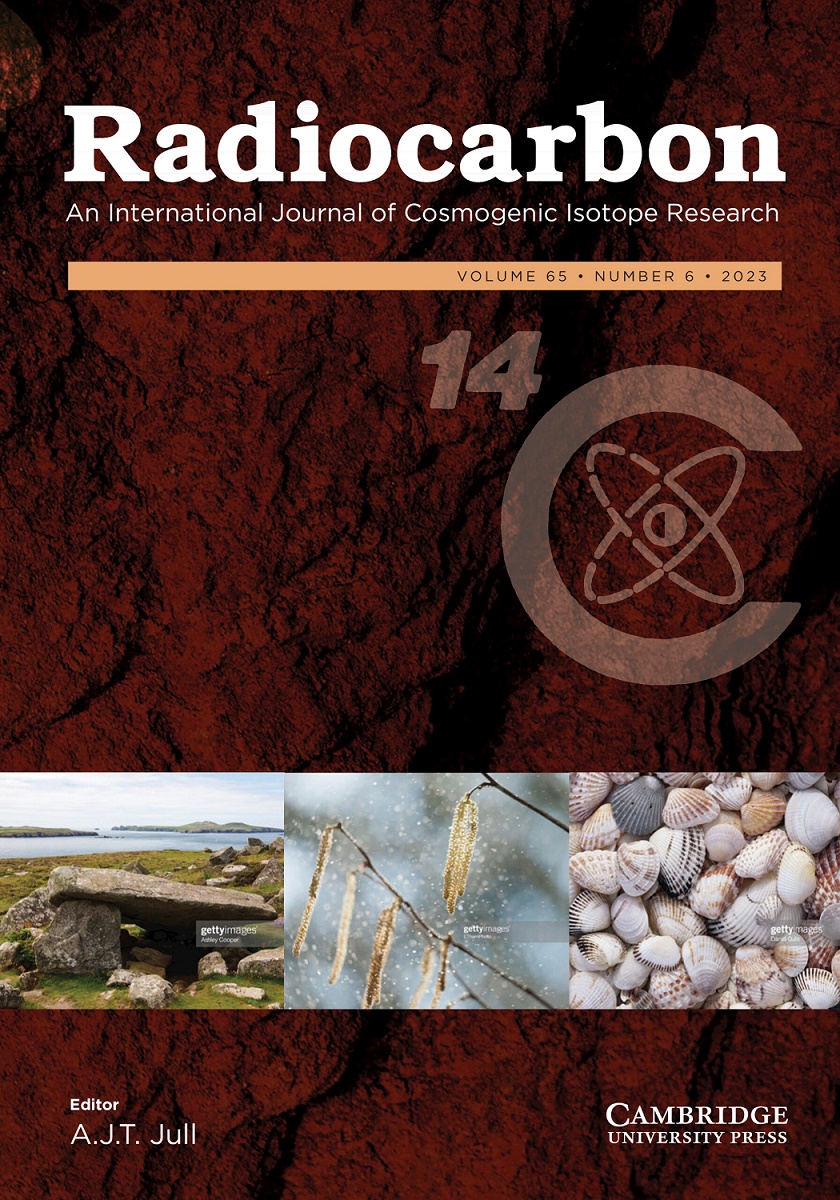St.NITRIANSKA BLATNICA(斯洛伐克)的乔治圆形大厅:考古学评论
IF 1.3
3区 地球科学
Q2 GEOCHEMISTRY & GEOPHYSICS
引用次数: 0
摘要
2021 年,公布了一系列关于斯洛伐克尼特里亚斯卡-布拉特尼察圣乔治圆形大厅的放射性碳年代。这些样本是在修复工作中获得的。根据分析,作者将圆形大厅的年代定为公元 820-887 年左右,86%的概率分布在公元 863 年之前。年代学的依据是从最古老的灰泥层中发现的四块木片样本中得到的放射性碳合并日期(公元前 1191±10 年)。然而,作者提出的日期令人担忧。结论是基于样本的选择和放射性碳年代的建模,但对多年来对当地聚落群的广泛考古研究成果以及现存的历史和考古知识重视不够。目前对中世纪早期灰泥和石膏样本的重新分析以及简单的建模证实了另一种假设,为我们提供了公元前 1115 ± 13 年(公元 892-988 2σ)的日期。由此得出的概率范围符合当前的考古和历史知识。因此,与之前的结论相反,圆形大厅的建造年代应为 9 世纪末至 10 世纪末。本文章由计算机程序翻译,如有差异,请以英文原文为准。
RADIOCARBON DATING OF ST. GEORGE’S ROTUNDA IN NITRIANSKA BLATNICA (SLOVAKIA): AN ARCHAEOLOGICAL COMMENT
In 2021, a series of radiocarbon dates for St. George’s Rotunda in Nitrianska Blatnica (Slovakia) was published. The samples were acquired during restoration work. Based on the analysis, the authors dated the rotunda to the period of around AD 820–887, with 86% of the probability distribution lying in the period before AD 863. The chronology is based on the combined radiocarbon date 1191 ± 10 BP, which was obtained from four samples of wood fragments found in the oldest mortar layer. However, the date proposed by the authors raises concerns. The conclusions were based on a selection of samples and modeling of radiocarbon dates but put less emphasis on the results of many years of broad archaeological research on the local settlement agglomeration as well as extant historical and archaeological knowledge. The present re-analysis of the early medieval mortar and plaster samples and simple modeling corroborates the alternative hypothesis, providing us with the date 1115 ± 13 BP (cal AD 892–988 2σ). The resulting probability range is consistent with current archaeological and historical knowledge. Consequently, contrary to former conclusions, the construction of the rotunda should be dated to the period between the end of the 9th century and the end of the 10th century.
求助全文
通过发布文献求助,成功后即可免费获取论文全文。
去求助
来源期刊

Radiocarbon
地学-地球化学与地球物理
CiteScore
16.20
自引率
6.00%
发文量
85
审稿时长
6-12 weeks
期刊介绍:
Radiocarbon serves as the leading international journal for technical and interpretive articles, date lists, and advancements in 14C and other radioisotopes relevant to archaeological, geophysical, oceanographic, and related dating methods. Established in 1959, it has published numerous seminal works and hosts the triennial International Radiocarbon Conference proceedings. The journal also features occasional special issues. Submissions encompass regular articles such as research reports, technical descriptions, and date lists, along with comments, letters to the editor, book reviews, and laboratory lists.
 求助内容:
求助内容: 应助结果提醒方式:
应助结果提醒方式:


